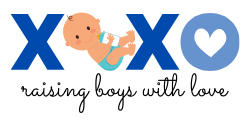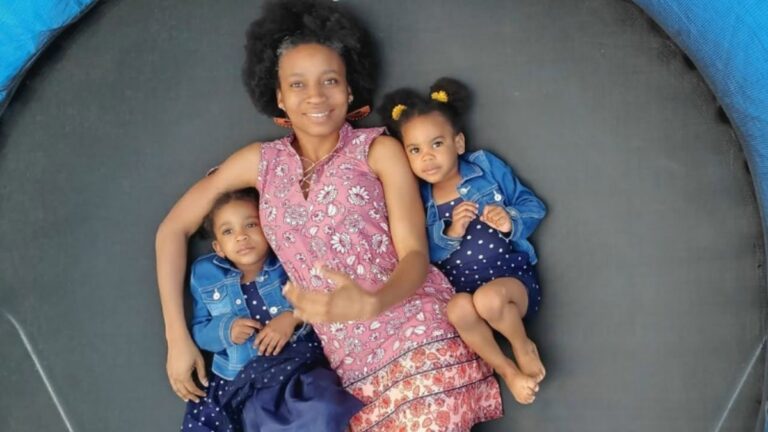Understanding Your Baby’s Asymmetrical Head Shape: A Guide for First-Time Parents
When we become parents for the first time, we are as confused as we are elated at the birth of our most prized possession. We sit and marvel at every little detail and often get worried about little things like the skin being too dry, the hands and feet being cold or the newborn having an asymmetrical head shape. It is absolutely normal for the perfect little beings to have a variety of head shapes, some of which may appear unconventional or unfamiliar, but as brand-new parents, it is sure to make us wonder if it may be a cause for concern.
While a lot of the variations in these asymmetrical head shapes are temporary and very often resolve in some time on their own, it is important to figure out when you may need medical intervention. By reading about factors that can influence the shape of your baby’s head, you can monitor development and improvement and then decide accordingly.
Let us explore common variations in head shape, such as cone-shaped heads or mild asymmetry, which are often transient and resolve naturally. Let us also touch upon the rare condition of Craniosynostosis, where certain skull sutures fuse prematurely, leading to abnormal head growth. Understanding the signs and symptoms of Craniosynostosis is crucial for early detection and appropriate management.
Remember, your baby’s head shape is just one unique aspect of their individual journey through infancy. Embrace their distinctiveness and treasure every moment of their remarkable growth and development.
The Amazing Transformation of Your Baby’s Head
The Newborn Skull: Soft and Moldable
A newborn’s skull is remarkably different from an adult’s. It consists of soft spots called fontanels, which allow for flexibility and accommodate rapid brain growth during infancy. Fontanels serve as growth plates that eventually fuse over time. Additionally, sutures connect the skull bones, enabling the molding and shaping of the head.
The Role of the Birth Process
The journey through the birth canal can influence a baby’s head shape. The pressure and forces exerted during labor and delivery may temporarily mold and reshape the head. It’s normal for a baby’s head to appear elongated or cone-shaped shortly after birth, as an adaptation to the birthing process. This molding usually resolves naturally within a few days or weeks.
Understanding the Common Shapes of Newborn Heads: Why Does My Baby Have a Different Shaped Head?
Cone-Shaped Head: Caput Succedaneum
Caput succedaneum refers to swelling and fluid accumulation on the scalp during labor and delivery. It often causes a cone-shaped appearance at the top or back of the baby’s head. This condition is generally harmless and resolves on its own within a few days. Gentle massaging and regular repositioning can help alleviate any discomfort associated with caput succedaneum.
Asymmetrical Head: Plagiocephaly
Plagiocephaly refers to an asymmetrical head shape where one side of the head appears flatter or distorted compared to the other. This can occur due to factors such as intrauterine positioning, favoring one side during sleep, or spending excessive time in the same position. Mild cases of plagiocephaly can be corrected through tummy time exercises and repositioning techniques, such as alternating the head’s resting position during sleep. In more severe instances, cranial orthosis or helmets may be recommended to promote symmetrical head growth.
Recognizing and Differentiating Weird Shaped Heads from Abnormal Head Shapes: Craniosynostosis
What is Craniosynostosis?
Craniosynostosis is a significantly rare condition, which is characterized by the premature fusion of one or more sutures in an infant’s skull. This fusion restricts growth in the infant’s skull and limits it to specific directions, resulting in an abnormal head shape. Different types of Craniosynostosis exist, including sagittal synostosis, metopic synostosis, and coronal synostosis, each with distinct head shape abnormalities.
Identifying Craniosynostosis
There are certain signs and symptoms that may be an indication of Craniosynostosis. These include an uneven appearance of the forehead or face of the baby, abnormal ridge-like formations in the head, or more commonly, a persistently misshapen head. If you happen to notice any such symptoms or have concerns like these, it is crucial to seek medical attention and evaluation promptly. A pediatrician or specialist, such as a pediatric neurologist or craniofacial surgeon, can provide a proper diagnosis and recommend appropriate treatment if necessary.
Promoting Healthy Head Development
Regular Monitoring and Documentation of the Asymmetrically Shaped Head
Maintaining open communication with your pediatrician is vital. Regular check-ups allow for monitoring and documentation of your baby’s head shape progress. Taking photographs at various stages can provide a visual reference for comparison and help track any changes or improvements over time.
Encouraging Natural Head Shaping and Molding Techniques
To promote healthy head development, frequent repositioning is essential. Avoid prolonged periods in the same position and provide ample tummy time during supervised play. Utilizing babywearing and carrying positions that distribute pressure evenly on the head can also help.
The Importance of Tummy Time
Tummy time is crucial for your baby’s overall development, including its head shape. It helps strengthen the neck, shoulder, and arm muscles while relieving pressure from the back of the head. Start small with short sessions that don’t tire out your baby and then gradually increase the time as your baby gets used to it and becomes more comfortable. Engage in interactive play during tummy time to make it enjoyable.
Creating a Safe Sleep Environment
To reduce the risk of sudden infant death syndrome (SIDS) while promoting healthy head development, always place your baby on their back to sleep. Avoid excessive pressure on one area of the head by alternating the head’s position from side to side. Additionally, limit the time your baby spends in restrictive devices like car seats and swings.
When to Seek Professional Guidance for Your Baby’s Asymmetrical Head Shape
Consulting Your Pediatrician
Maintaining open communication and trust with your pediatrician is vital. If you have any concerns or questions about your baby’s head shape, don’t hesitate to discuss them during routine check-ups. Your pediatrician can provide reassurance or refer you to a specialist if necessary.
Working with Specialists
In cases where cranial asymmetry persists or Craniosynostosis is suspected, a pediatric neurologist or craniofacial surgeon may be involved. They can provide a thorough evaluation and recommend appropriate interventions, such as cranial molding helmet therapy if needed.
Remember: Every Baby is Unique
Understanding the shape of your baby’s head can alleviate concerns and empower you to make informed decisions regarding their care. While some babies may exhibit temporary molding or mild asymmetry, most cases resolve naturally over time. However, it is essential to differentiate between common variations and more severe conditions like craniosynostosis. By following recommended techniques for healthy head development and seeking professional guidance when necessary, even in the most serious circumstances, you can support your baby’s growth and ensure their well-being. Remember, every baby is unique, and whether they have a symmetrical or asymmetrical head shape, it will be just another beautiful aspect of their journey through infancy.
- How to Raise Awesome Parents: A Guide by the World’s Coolest 5-Year-Old - December 22, 2023
- How to Use Sight Words: Strategies for Mastering Common Words - August 4, 2023
- Understanding Dyslexia: Nurturing the Unique Reading Journey of Dyslexic Readers - July 31, 2023







